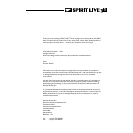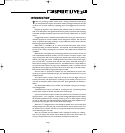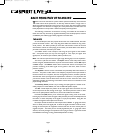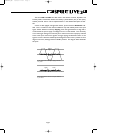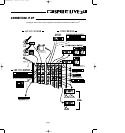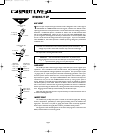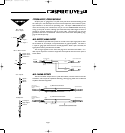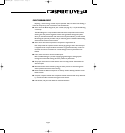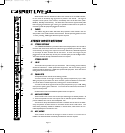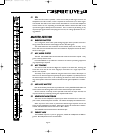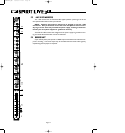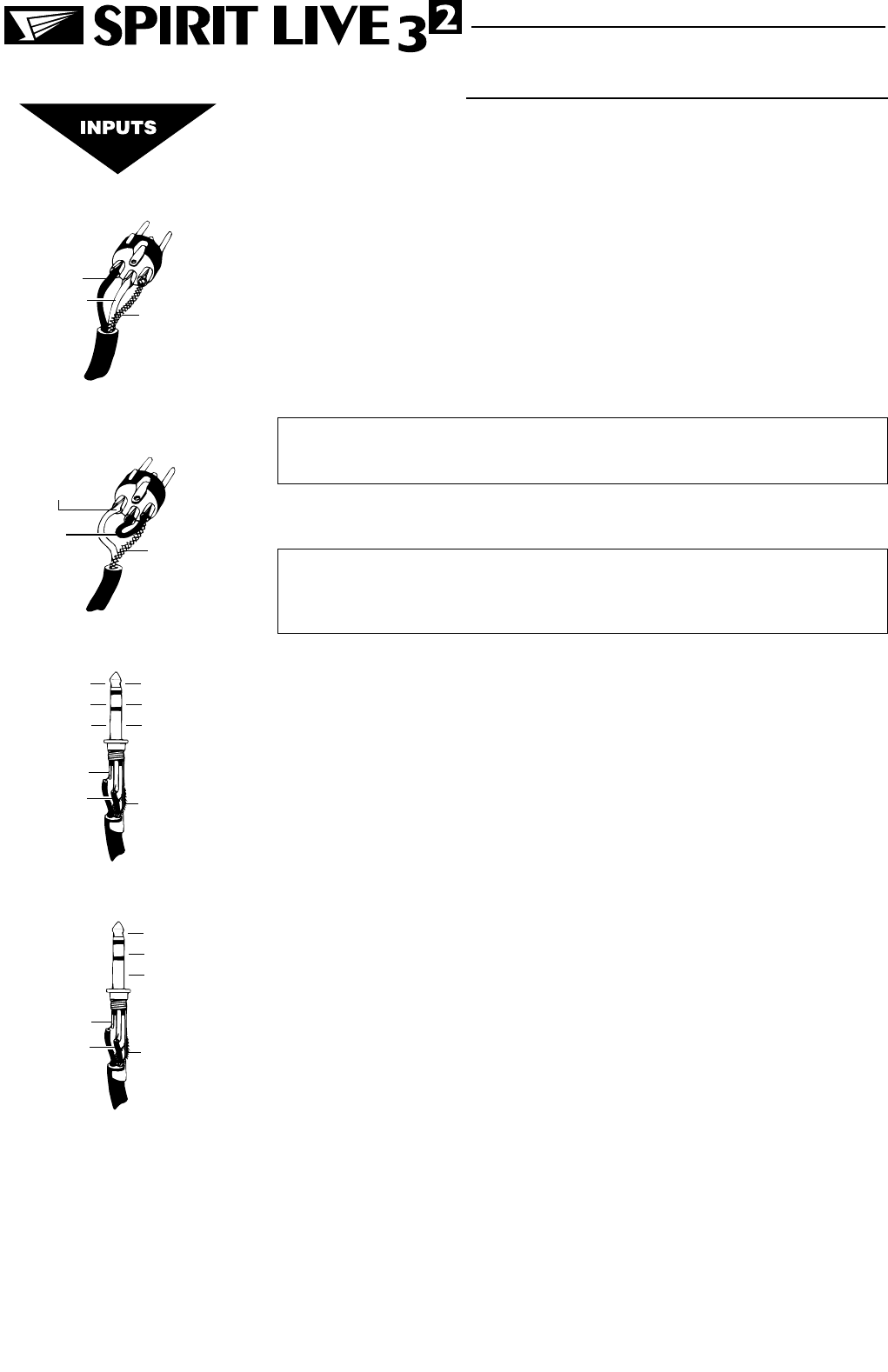
WIRING IT UP
MIC INPUT
T
he mic input accepts XLR-type connectors and is designed to suit a wide range of
BALANCED or UNBALANCED low-level signals, whether from delicate vocals
requiring the best low-noise performance or close-miked drum kits needing maximum
headroom. Professional dynamic, condenser or ribbon mics are best because these
will be LOW IMPEDANCE. While you can use low-cost HIGH IMPEDANCE mics,
you do not get the same degree of immunity to interference on the microphone cable
and as a result the level of background noise may be higher. If you turn the PHAN-
TOM POWER on, the socket provides a suitable powering voltage for professional
condenser mics.
DO NOT use unbalanced sources with the phantom power switched on. The
voltage on pins 2 & 3 of the XLR connector may cause serious damage.
The input level is set using the INPUT knob.
WARNING - Start with the INPUT knob at the -6 position when
plugging high level sources into the LINE input to avoid overloading the
input channel or giving you a very loud surprise!
LINE INPUT
The LINE input offers the same gain range as the MIC input, but at a higher input
impedance. This is suitable for most line level sources, and provides the gain needed
for lower level keyboards and high impedance microphones. The input accepts 3-pole
`A gauge jacks, or 2-pole mono jacks which will automatically ground the cold input.
Use this input for sources other than mics, such as keyboards, drum machines, synths,
tape machines or guitars. The input is BALANCED for low noise and immunity from
interference, but you can use UNBALANCED sources by wiring up the jacks as
shown, although you should then keep cable lengths as short as possible to minimise
interference pick-up on the cable. Refer to the section How to Prevent Interference
later in this manual. Note that the ring must be grounded if the source is unbalanced.
Set the input level using the INPUT knob, starting with the knob turned fully anticlock-
wise. Plugging into the LINE input automatically cuts off the MIC input.
Note that with high level sources it may be necessary to reduce the level at source
to avoid overloading the input.
INSERT POINT
The unbalanced, pre-EQ insert point is a break in the channel signal path, allowing
limiters, compressors, special EQ or other signal processing units to be added in the
signal path. The Insert is a 3-pole A gauge jack socket which is normally bypassed.
When a jack is inserted, the signal path is broken, just before the EQ section.
The signal from the channel appears on the TIP of the plug and is returned on the
RING, with the sleeve as a common ground.
Page 6
Signal Send
Signal Return
Gnd/Screen
Tip
Ring
Sleeve
Inserts
Hot (+ve)
Cold (-ve)
Gnd/Screen
Signal
Gnd/Screen
Gnd/Screen
Tip
Ring
Sleeve
Unbalanced
3 pole Jack
Unbalanced Mic
XLR
Balanced Mic
XLR
Balanced
3 pole Jack
2. Hot(+ve)
3. Cold(-ve)
1. Screen
1. Screen
2. Hot(+ve)
Link 3
to 1
USERMAN.QXD 13/06/97 12:27 Page 6




